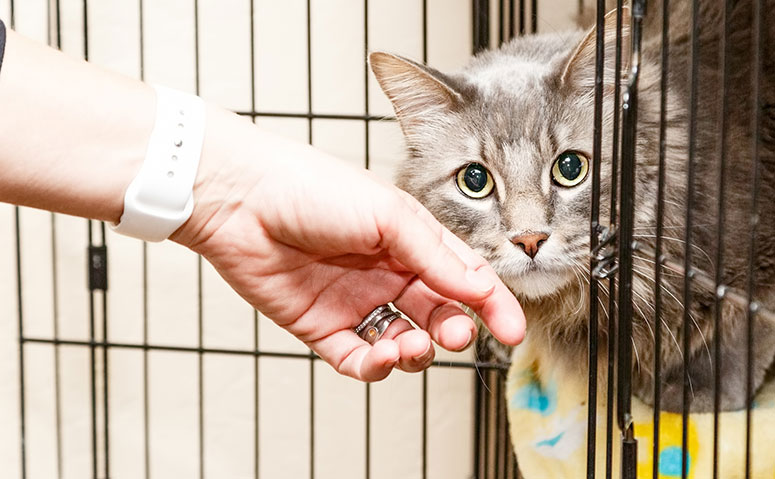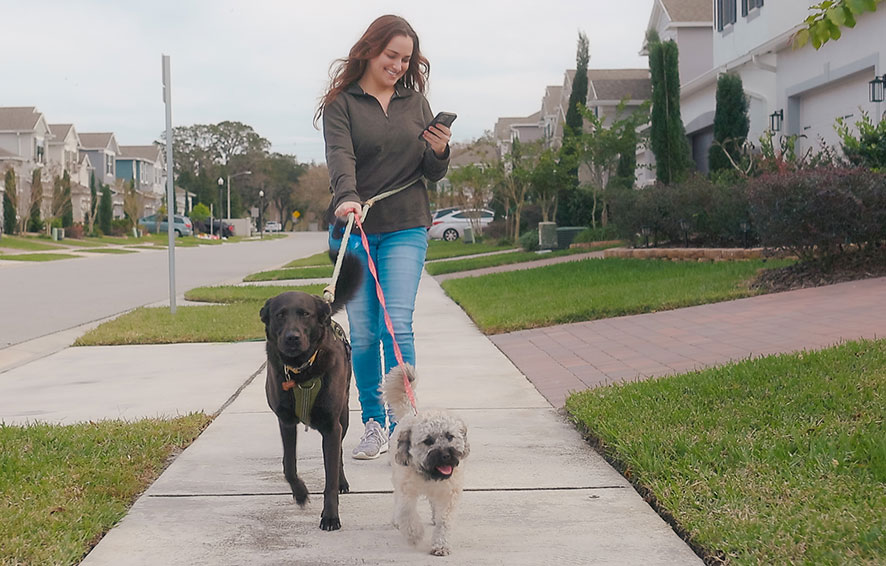Table of Contents
If you decide to adopt a pet instead of purchasing one from a breeder, you have a few big considerations. For example, what criteria do you have for a rescue pet? Would you want to foster a pet before committing to an adoption? And is it better to adopt from a no-kill shelter or a rescue organization?
Whether you choose a traditional shelter, a no-kill shelter, or a rescue instead of a pet shop or breeder, you are making a compassionate choice that will likely save an animal’s life. Even if the pet you adopt is not slated for euthanasia, you are making room for another pet that may be at risk.
This article explores the differences between no-kill shelters and rescue groups to help you make the best decision when adopting a new dog or cat.
What Is a No-Kill Shelter?
A no-kill shelter is committed to not killing healthy animals if euthanasia is not necessary for health or aggressive behavior reasons. The no-kill shelter movement began in the 1980s and 1990s when shelter animals came with a certain stigma, and overwhelming numbers of adoptable pets were being put down in the U.S.
Kill vs. No-Kill Shelters
A traditional, open-admission shelter is an organization that accepts all animals brought to its doors regardless of available space, health, or temperament. Meanwhile, no-kill shelters have committed to not killing treatable or healthy animals even when the shelter is at full capacity. No-kill shelters only euthanize animals if they are terminally ill or present a risk to public safety, while kill shelters can euthanize animals at their discretion or for lack of space.
No-kill shelters have limited space and may need to turn away animals that come to them. But in traditional shelters, animals are often put down if they are not adopted within a certain amount of time, so they don’t sit in the shelter for months or years.
Every year, millions of animals are brought into shelters because their owners can’t care for them (or have passed away), don’t want them anymore, or are picked up off the street as strays. Animals often enter shelters because of abuse, neglect, and abandonment. To address these issues, kill and no-kill shelters partner with rescue groups with programs to adopt dogs and cats into loving homes. For specific animal shelter facts, contact shelters in your area to inquire about their policies, placement rates, kill rates, and pets available for adoption.
What Is an Animal Rescue?
An animal rescue organization is a group dedicated to pet adoption services that helps stray, abandoned, and abused pets find good homes. These groups are often run by volunteers, compared to shelters that typically have staff members and employees. Animal rescue organizations are generally nonprofit organizations that rely on donations to support their operations. Many rescue groups are committed to specific breeds of animals, such as the Golden Retriever Rescue of New Mexico and the Texas Husky Rescue. Meanwhile, other groups focus more broadly on all breeds of dogs or cats.
Rescue groups and animal shelters often work together to get animals with unique challenges and trouble adopted into homes. Rescue groups also work with breed-specific clubs as an extension of their purebred services. Examples are BMDCA Rescue and Rehome, part of the Bernese Mountain Dog Club of America, and Bulldog Rescue, part of the Bulldog Club of America.
Pros and Cons of No-Kill Shelters and Rescue Groups
No-kill shelters and rescue groups have the same primary goal: to help homeless pets find good, reliable places to live. Both types of organizations provide food, water, and shelter to pets in need and engage in community outreach to get the word out about adoptable pets.
However, a major difference between no-kill shelters and rescue groups is the limitation of how many animals can be cared for at any given time. Rescue organizations often have more flexibility about the types of animals they help and more resources than shelters, especially if a local city or county government runs them. They may have foster volunteers who will temporarily take animals into their homes until they find a forever home.
Shelters have limited budgets and resources due to government funding commitments. Shelters fill up quickly and may work to get their animals adopted as soon as possible. However, rescue groups often have a more rigorous adoption process, extensive paperwork, and higher adoption fees. Some shelters will adopt dogs and cats at no cost during certain promotions.
However, no-kill shelters or rescue groups are not inherently better than the other. Each organization is unique and has a different approach to helping dogs and cats get adopted. Both types of organizations are great options for helping animals in need, and both benefit from your adoption business. However, the most important thing is to choose a pet that is right for your household and lifestyle so that you can take the best care of their health now and in the future.
Other Ways to Support Animals in Need of Adoption
In addition to adoption, there are other ways that you can support homeless pets in your local community and nationwide. Both shelters and rescues need monetary donations and supplies, equipment, food, blankets, and other pet care materials. You can volunteer your time to support homeless animals, which is an excellent option if you aren’t quite ready to adopt a pet yet. Volunteering with dogs and cats will give you a better sense of how you interact with pets and the types of pets you may be open to adopting.
Fostering a dog or cat is another option to bridge the gap between shelter/rescue life and living in a new home. Many rescue groups rely upon pet foster parents to care for overflow pets they don’t have room for at their facilities. Ask your local shelter if foster opportunities are available to help lighten their care burden. Some shelters have foster-for-a-day programs that allow volunteers to take a pet out of the shelter and to their own homes for a day for a much-needed break and socialization practice. Many people who participate in these programs immediately fall in love with their foster dogs or cats and end up adopting them, with the added benefit of first-hand knowledge about how the pet interacts in the home and with other family members and pets already living there.
Easy and effective ways to support shelter and rescue pets are to follow organizations on social media, engage with their posts, and encourage others to do the same. You can leave a good online review for an organization you have personally dealt with to encourage others to support them. Other ways to support shelters and rescues are to attend fundraising events and participate in outreach efforts to inform the public about pets needing homes. You can sign up for a 5K race that benefits a dog rescue, work at an information booth at a festival to tell people about an organization’s services or participate in campaigns and advocacy efforts that involve making calls and writing letters to legislators about improving conditions for homeless pets.
How Healthy Paws Helps Homeless Pets
Like you, we care deeply about the homeless pet population in our country and want to do our part in connecting dogs and cats with loving families. In 2009, we launched the Healthy Paws Foundation to help animal rescue organizations care for sick pets that come into their care. As of December 31, 2022, we have donated over $2 million to help homeless pets. Here at Healthy Paws, with every pet insurance quote and referral, we donate towards helping homeless pets and have contributed to over 600 nonprofit pet organizations.
Through our nonprofit grant program, pet memorial project, and referral program, we are advocates for pets in need as much as a pet insurance provider. No-kill, pet-serving nonprofits in the U.S. can apply for a Healthy Paws Foundation grant on our website to get help with the costs of life-saving vaccines, spay/neuter surgeries, medical treatments, food, housing, and other needs of homeless pets they care for. We do not support shelters that euthanize animals for space reasons.
When you request a quote for pet health insurance through our website, you also help cover the cost of medical care for a homeless pet in need. Contact us today to learn more about our charitable contributions to homeless pets or how pet health insurance works.






